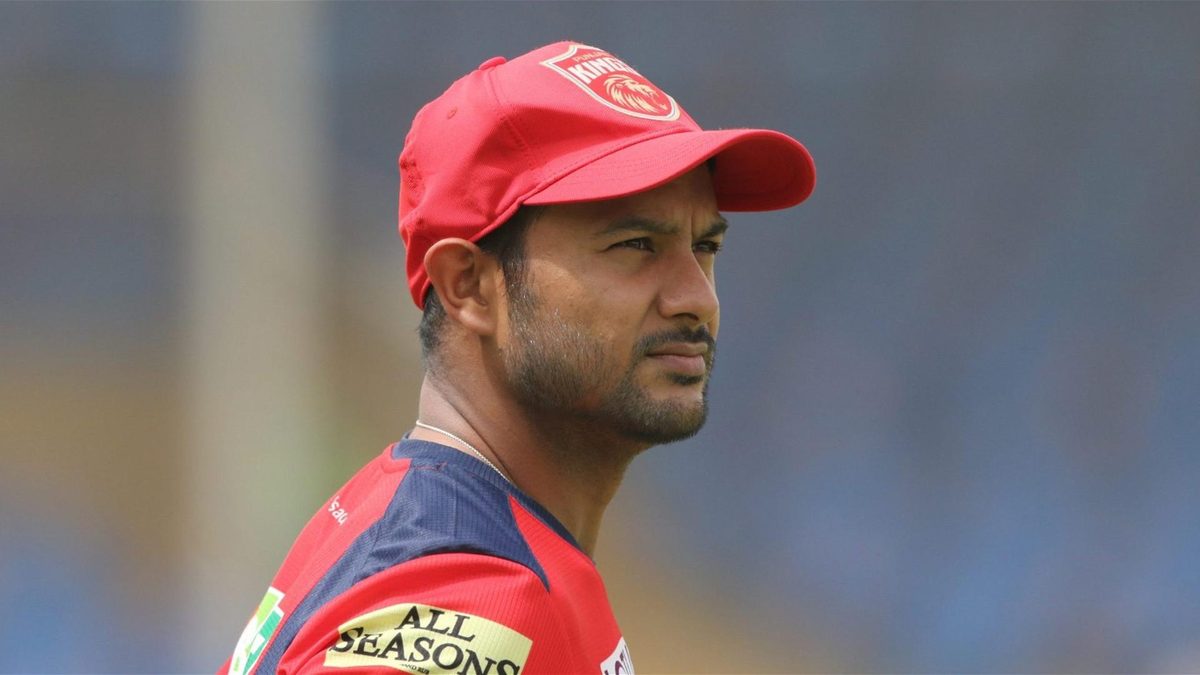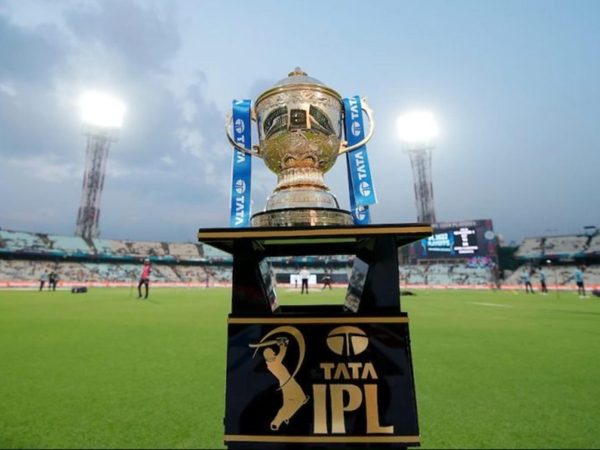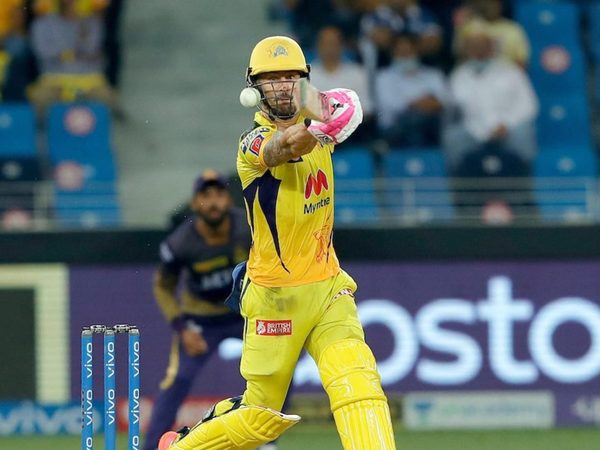
Mayank Agarwal’s rising stock as a T20 opener is hard to miss, but India have missed a trick by not giving him a go in the format, writes Sarah Waris.
Punjab Kings are in the news for all the wrong reasons: they have not made the playoffs since 2015, have stumbled in their team selections season-after-season, and have given their skipper KL Rahul the role of ‘anchor’, which, by his own admission, does not suit his natural self. Amid all their woes, however, there have been bright sparks. Arshdeep Singh and Ravi Bishnoi have emerged as two young Indian bowlers who could underpin the franchise’s bowling attack for years to come, with their attitude and temperament in tough situations standing out. But while that prodigious pair have earned plenty of plaudits, there remains one player who often goes unnoticed but manages to impress seemingly every time he takes the field: Mayank Agarwal.
Rahul’s opening partner, Mayank was drafted into the franchise during the 2018 mega auction and, though he had an under-par season at PBKS in his first year, he has reinvented himself to end as one of the most vital members of the side. He has scored over 330 runs in each of the last three editions of the IPL, with a strike rate over 140. That latter figure shot up to 156.45 last year. No other Indian managed to score more than 400 runs and strike at a rate of over 150 in 2020. In 2021, he has amassed 429 runs — the most he has made in a single season — at an average of 42.90. Never before has Mayank averaged over 40 in a year, and his free-flowing consistency is in stark contrast to the role that is played by Rahul in the team. While Rahul has at times had to exchange explosiveness for consistency, Mayank has managed both.
This is an opening partnership that works. Since the beginning of 2019, the duo have an average partnership of 58.42 at the top of the order, with a run rate of 8.53 an over. In the powerplay, while Rahul bats with a strike rate of just over 118, Mayank adopts a more fearless approach, as he looks to maximize the field restrictions. With an overall strike rate of 143.26 against fast bowlers and 153.31 against spin, the batter takes on the responsibility of giving Punjab a quick start, which allows Rahul to take a more cautious approach and bat through the innings. With the team’s inconsistent middle-order an obstacle to overcome, the management has allocated specific roles to the openers, and though it might not be a flawless tactic, the pair have excelled in what has been asked of them.
Mayank, thus, is the aggressor, and his continued success suggests that he could have had a fruitful T20I career as an opener as well.
While Shikhar Dhawan and Rohit Sharma were for a long time one of the best white-ball pairs going, especially in ODI cricket, their scoring rate left much to be desired at times in T20Is. The left-hander batted with a strike rate of 121.28 in the first six overs, and, though Rohit was slightly more impressive, with a strike rate of 131.55 in the powerplay, their sedate starts often left the middle order with catching up to do. Though Dhawan and Rohit are the most prolific opening pair there has been, with 1,743 runs in T20Is, their partnership run-rate of 8.28 is the fourth-worst among the 23 pairs who have made at least 500 runs together at the top of the order.
Neither has the best strike-rate in the IPL either, with Dhawan striking at 127.13 and Rohit a tad better at 130.25. But, for each, the presence of an aggressive opening partner alongside them has played a huge role in the success of their respective teams. The duo of Dhawan and Prithvi Shaw is much-feared, and their partnership is a huge reason for Delhi Capitals’ run in the last two seasons, while Rohit along with Quinton de Kock have been at the forefront of Mumbai Indians’ slew of title-winning campaigns. The senior pros from India look to steady the ship and take the game deep as Shaw and de Kock look to go all out. Having an anchor open with a fearless batter has also worked wonders for KKR, with Venkatesh Iyer’s flair working perfectly with Shubman Gill’s class, which has proven to be a major reason for their turnaround in the UAE leg of IPL 2021.
The importance of a player who can go after the bowling from ball one while the other looks to bat till the end has reaped rewards in the past, and Mayank, who has donned a similar role in PBKS alongside Rahul, could have been a batter who fitted into the India team perfectly as an opener, even if it meant breaking up the Dhawan-Rohit pair.
Though Rohit has formed a happy opening pair with Rahul, with the duo scoring 586 runs at an average of 45.07 in 13 games with a healthy run rate of 9.42 an over, assuming that the two will instantly succeed and bat with a better strike rate in the T20 World Cup after being IPL anchors is wishful thinking. Mayank, hence, could have been the ideal choice at the top, alongside either Rahul or Rohit.
If he had been paired with his PBKS teammate Rahul, the latter could have been a more proactive version of his IPL self, with a reliable middle-order allowing him to bat with freedom. If Mayank and Rohit were partnered at the top, it would have allowed one of the best white-ball cricketers to bat alongside a prime aggressor. Rahul could then have been pushed to the middle-order, where he has fared well in his limited chances.
But this is all theoretical. Mayank is still uncapped in T20Is, and he might never win a 20-over cap.
Why he was never in the fray as a white-ball cricketer
Mayank has just played five ODIs for India, all of which came last year. He has been branded a Test specialist, with his records in the longer format overshadowing his List A and T20 record. The Karnataka player has scored over 7,800 runs in domestic white-ball games, 3,822 of which have come in T20s. A month after being bought by PBKS in 2018, Mayank top-scored in the Vijay Hazare Trophy, making 723 runs in eight games. His solid technique, allayed with a good range of shots allows him to excel across formats, but, fortunately, or unfortunately, his stellar start in Test cricket in 2018, where he currently averages over 45 despite finding himself on the outer, has ensured that his achievements in white-ball cricket did not get the attention they deserved.
It’s now clearly too late to include Mayank in India’s T20 World Cup squad, even with the cut-off date still a few days away. But even after the tournament, he will have to contend with a plethora of options rising up the ranks. In Ruturaj Gaikwad, Devdutt Padikkal, Shaw, Yashasvi Jaiswal, and Gill, India have a rich pool of classy openers to choose from, and any replacement will likely be picked from the young guns coming in.
Mayank, at 30,might be a gun, but he’s not young, and with players in their early 20s dictating terms in the IPL, investing in the future will be the path India choose to take. Equipped with the right intent and with the ability to adapt naturally according to different situations, he has ensured that PBKS get off to decent starts and there is no reason to believe he would have not translated his IPL form into India colours. Sadly, it might be too late to find out.








